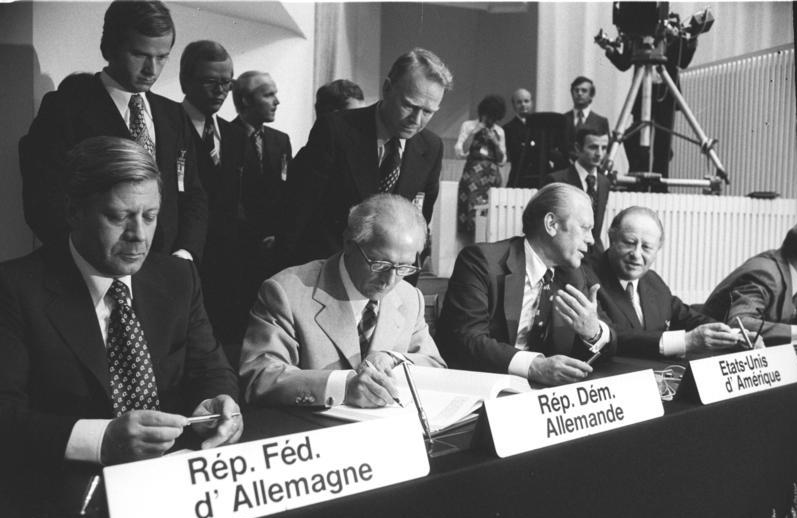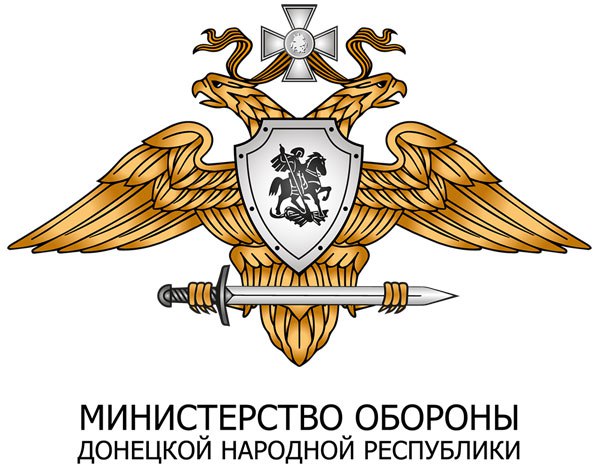|
Joint Centre For Control And Co-ordination
The Joint Centre for Control and Coordination on ceasefire and stabilization of the demarcation line, abbreviated JCCC, is an organization composed of Ukrainian and Russian military officers, whose role is to help implement the Minsk ceasefire agreements and ensure the safety of OSCE monitors in the Russo-Ukrainian War. It was established September 26, 2014. In April 2015, Ukrainian and Russian representatives began to keep separate logs of ceasefire violations. The Russian members left Ukraine in December 2017. Headquarters The JCCC established headquarters in Soledar, in Ukraine's Donetsk oblast. In October 2014, they moved to Debaltseve. On January 21, 2015, the Russian contingent returned to Soledar because of the deteriorating situation. On February 1, several rockets hit the Debaltseve headquarters, after which the Ukrainians moved to Soledar. Composition At the end of September 2014 the JCCC working group included 76 members of the Russian Armed Forces. According to Ukr ... [...More Info...] [...Related Items...] OR: [Wikipedia] [Google] [Baidu] |
Minsk Protocol
The Minsk agreements were a series of international agreements which sought to end the War in Donbas (2014–2022), Donbas war fought between Russian separatist forces in Donbas, armed Russian separatist groups and Armed Forces of Ukraine, with Russian Armed Forces, Russian regular forces playing a central part. The first, known as the Minsk Protocol, was drafted in 2014 by the Trilateral Contact Group on Ukraine, consisting of Ukraine, Russia, and the Organization for Security and Co-operation in Europe (OSCE), with mediation by the leaders of France and Germany in the so-called Normandy Format. After extensive talks in Minsk, Belarus, the agreement was signed on 5 September 2014 by representatives of the Trilateral Contact Group and, without recognition of their status, by the then-leaders of the self-proclaimed Donetsk People's Republic (DPR) and Luhansk People's Republic (LPR). This agreement followed multiple previous attempts to stop the fighting in the region and aimed to ... [...More Info...] [...Related Items...] OR: [Wikipedia] [Google] [Baidu] |
Organization For Security And Co-operation In Europe
The Organization for Security and Co-operation in Europe (OSCE) is the world's largest regional security-oriented intergovernmental organization with observer status at the United Nations. Its mandate includes issues such as arms control, promotion of human rights, freedom of the press, and free and fair elections. It employs around 3,460 people, mostly in its field operations but also in its secretariat in Vienna, Austria, and its institutions. It has its origins in the mid-1975 Conference on Security and Co-operation in Europe (CSCE) held in Helsinki, Finland. The OSCE is concerned with early warning, conflict prevention, crisis management, and post-conflict rehabilitation. Most of its 57 participating countries are in Europe, but there are a few members present in Asia and North America. The participating states cover much of the land area of the Northern Hemisphere. It was created during the Cold War era as a forum for discussion between the Western Bloc and Eastern Bl ... [...More Info...] [...Related Items...] OR: [Wikipedia] [Google] [Baidu] |
Russo-Ukrainian War
The Russo-Ukrainian War; uk, російсько-українська війна, rosiisko-ukrainska viina. has been ongoing between Russia (alongside Russian separatist forces in Donbas, Russian separatists in Ukraine) and Ukraine since February 2014. Following Ukraine's Revolution of Dignity, Russia Annexation of Crimea by the Russian Federation, annexed Crimea from Ukraine and supported pro-Russian separatists in the War in Donbas (2014–2022), war in Donbas against Ukrainian government forces; fighting for the first eight years of the conflict also included List of Black Sea incidents involving Russia and Ukraine, naval incidents, Russian–Ukrainian cyberwarfare, cyberwarfare, and Russia–Ukraine relations, heightened political tensions. In February 2022, the conflict saw a major escalation as Russia launched a 2022 Russian invasion of Ukraine, full-scale invasion of Ukraine. In early 2014, pro-Russian Ukrainian president Viktor Yanukovych was ousted from office as a r ... [...More Info...] [...Related Items...] OR: [Wikipedia] [Google] [Baidu] |
Soledar
Soledar ( uk, Соледа́р, ; ), formerly known as Karlo-Libknekhtovsk ( uk, Карло-Лібкнехтівськ, Karlo-Libknekhtivs'k, 1965–1991), is a city in the Bakhmut Raion, which is located in what is internationally recognised as the Donetsk Oblast of Ukraine. The city lies from Bakhmut, and its population was 10,490 in January 2022. Since 11 January 2023, the city has reportedly been controlled by Russia, which considers the city to be part of its Donetsk People's Republic. History During the second half of the 17th century, the Don Cossacks settled in the region of Donbas. They built a village at the site of Soledar and named it Brіantsіvka (). In 1924, it was renamed to Karlo-Libknekhtovsk, and in 1965, after merging with nearby villages, received the status of a town. On 5 July 1991, the town changed its name to Soledar, which literally means "a gift of salt" in the Ukrainian and Russian languages, reflecting the long history of salt production in the area. ... [...More Info...] [...Related Items...] OR: [Wikipedia] [Google] [Baidu] |
Debaltseve
Debaltseve or Debaltsevo ( uk, Деба́льцеве ''Debálʼtseve'', ; russian: Деба́льцево ''Debálʼtsevo'') is a city of regional significance in the ''de facto'' Donetsk People's Republic; ''de jure'' Donetsk Oblast, Ukraine. The city is situated on the eastern edge of Donetsk Oblast, and borders Luhansk Oblast. Its population is approximately On 18 February 2015, after the Battle of Debaltseve, the town was captured by the Donetsk People's Militia. Geography Distance from Donetsk: by road - 74 km, by air – 58 km. Distance from Kyiv: by road - 803 km, by rail - 797 km. The administrative boundary between the Donetsk and Luhansk oblasts lies along with the eastern limits of the city. The city is located on a hill from which many Donbass rivers originate. The river Bulavin (a tributary of the river Krynka, Mius basin) originates in the southern outskirts of the city, the river Lozova (a tributary of the river Lugan, Seversky Donets bas ... [...More Info...] [...Related Items...] OR: [Wikipedia] [Google] [Baidu] |
Battle Of Debaltseve
The Battle of Debaltseve was a military confrontation in the city of Debaltseve, Donetsk Oblast, between the pro-Russian separatist forces of the Donetsk People's Republic (DPR) and Luhansk People's Republic (LPR), and the Ukrainian Armed Forces, starting in mid-January 2015 during the war in the Donbas region. The DPR forces recaptured Debaltseve, which had been under Ukrainian control since a counter-offensive by government forces in July 2014. The city lay in a "wedge" of Ukrainian-held territory bordered by the DPR on one side, and the LPR on the other, and is a vital road and railway junction. Separatists began a concerted effort to force Ukrainian troops out of the city on 16–17 January, sparking the battle. Heavy fighting went on until 18 February 2015, when Ukrainian forces retreated from Debaltseve to Artemivsk. It was the last major battle during the 2014–2015 phase of the War in Donbas, as the Minsk II ceasefire took effect on 15 February 2015. Large-scale fighti ... [...More Info...] [...Related Items...] OR: [Wikipedia] [Google] [Baidu] |
Russian Separatist Forces In Donbas
The Donetsk People's Militia and Luhansk People's Militia (formerly also called Russian separatist forces in Donbas) are pro-Russian paramilitaries in the Donbas region of eastern Ukraine, which have been fighting the Armed Forces of Ukraine in the Russo-Ukrainian War. During the Donbas War (2014–2022), they were affiliated with the self-declared Donetsk People's Republic (DPR) and Luhansk People's Republic (LPR). They supported the Russian military during the 2022 Russian invasion of Ukraine. In September 2022, Russia annexed the DPR and LPR, and the paramilitaries are being integrated into the Russian military. They are designated as terrorist groups by the Government of Ukraine. The separatist paramilitaries were formed during the 2014 pro-Russian unrest in Ukraine. The Donbas People's Militia was formed in March 2014 by Pavel Gubarev, who proclaimed himself "People's Governor" of Donetsk Oblast, while the Army of the South-East was formed in April in Luhansk Oblast. The ... [...More Info...] [...Related Items...] OR: [Wikipedia] [Google] [Baidu] |
Trilateral Contact Group On Ukraine
The Trilateral Contact Group on Ukraine (also known as the Trilateral Contact Group for the peaceful settlement of the situation in eastern Ukraine) is a group of representatives from Ukraine, the Russian Federation, and the Organization for Security and Co-operation in Europe that was formed as means to facilitate a diplomatic resolution to the war in the Donbass region of Ukraine. There are several subgroups.Medvedchuk will represent Ukraine in the subgroup of Humanitarian Affairs Tripartite Working Group 1852 |
OSCE Special Monitoring Mission To Ukraine
The OSCE Special Monitoring Mission to Ukraine was an international civilian observer mission of the Organization for Security and Cooperation in Europe (OSCE) mandated to contribute to reducing tensions and to help foster peace in Ukraine. The mission was deployed in March 2014, following the Russian Annexation of Crimea by the Russian Federation, annexation of Crimea and the outbreak of open War in Donbas (2014–2022), conflict in eastern Ukraine. Following the 2022 Russian Invasion of Ukraine, the mission discontinued its operations on 31 March 2022. Background In late 2013 Euromaidan, protests began in Kyiv as a response to the decision of the then-President of Ukraine, Viktor Yanukovych, to abandon the planned Ukraine–European Union Association Agreement. After months of protests, the government 2014 Ukrainian revolution, fell and 2014 pro-Russian unrest in Ukraine, unrest spread to other regions in Ukraine, in particular the Russian-speaking eastern and southern regions ... [...More Info...] [...Related Items...] OR: [Wikipedia] [Google] [Baidu] |
2014 In Ukraine
The following lists events that happened in the year 2014 in Ukraine. Incumbents *President: ** until 23 February: Viktor Yanukovych ** 23 February-7 June: Oleksandr Turchynov ** starting 7 June: Petro Poroshenko *Prime Minister: Arseniy Yatsenyuk (starting 27 February) Events January * January 11 - Yuri Lutsenko, one of the leaders of the protests, is injured during clashes with the police. * January 19 - New violent clashes erupt in Ukraine as a reaction to new strict anti-protest laws. * January 20 - Violence spreads in Kyiv as protesters clash with police. * January 21 - Violent clashes occur for a second day between protesters and police in Kyiv. * January 22 – At least five people are shot dead and hundreds injured as demonstrators clash with police over new laws limiting the right to protest in Ukraine. * January 24 - Unrest in Ukraine spreads to the cities of Khmelnitsky, Zhytomyr, Cherkasy, Lviv (Lvov), Ternopil, Ivano-Frankivsk, Lutsk, Rivne and Chernivtsi. In Ri ... [...More Info...] [...Related Items...] OR: [Wikipedia] [Google] [Baidu] |





